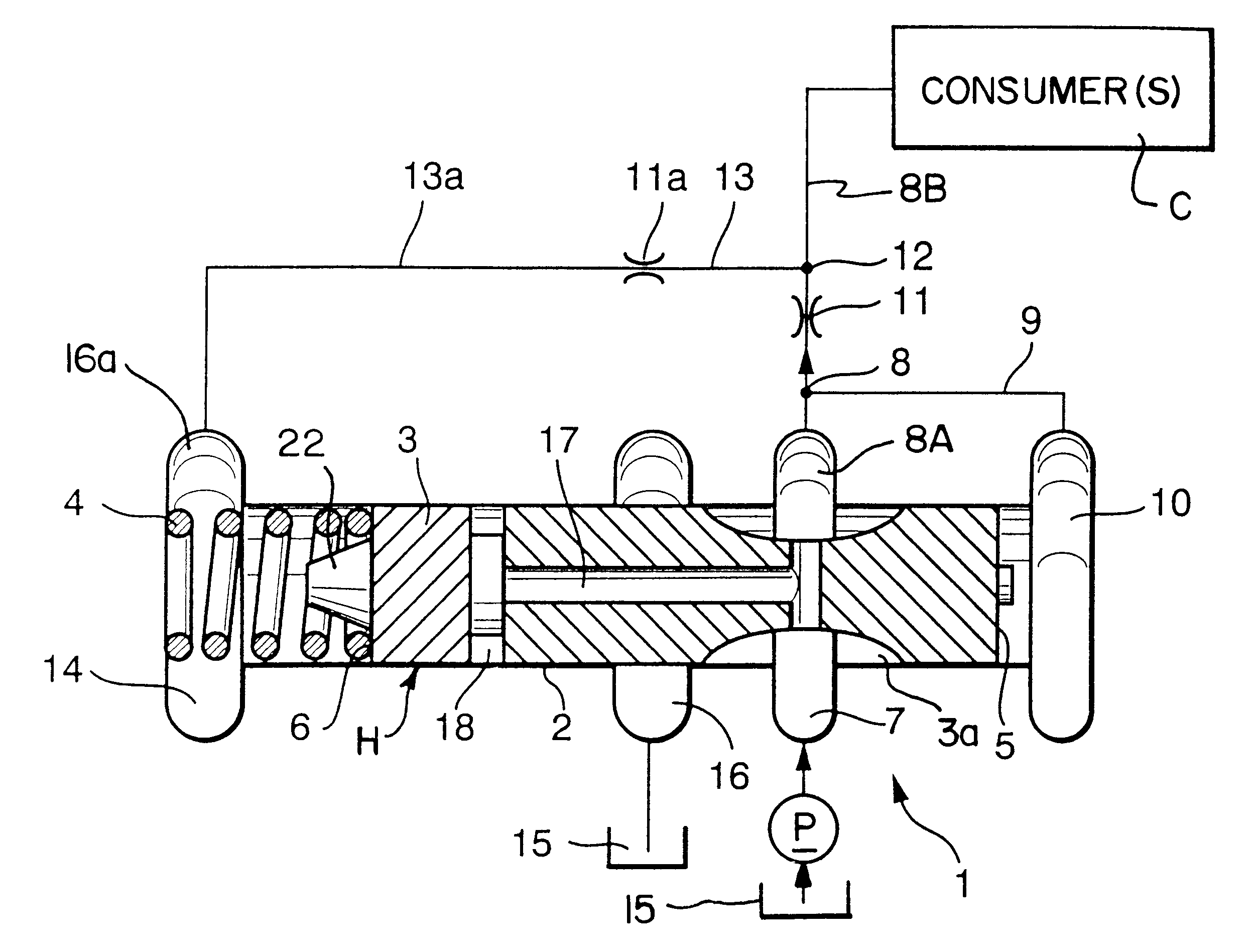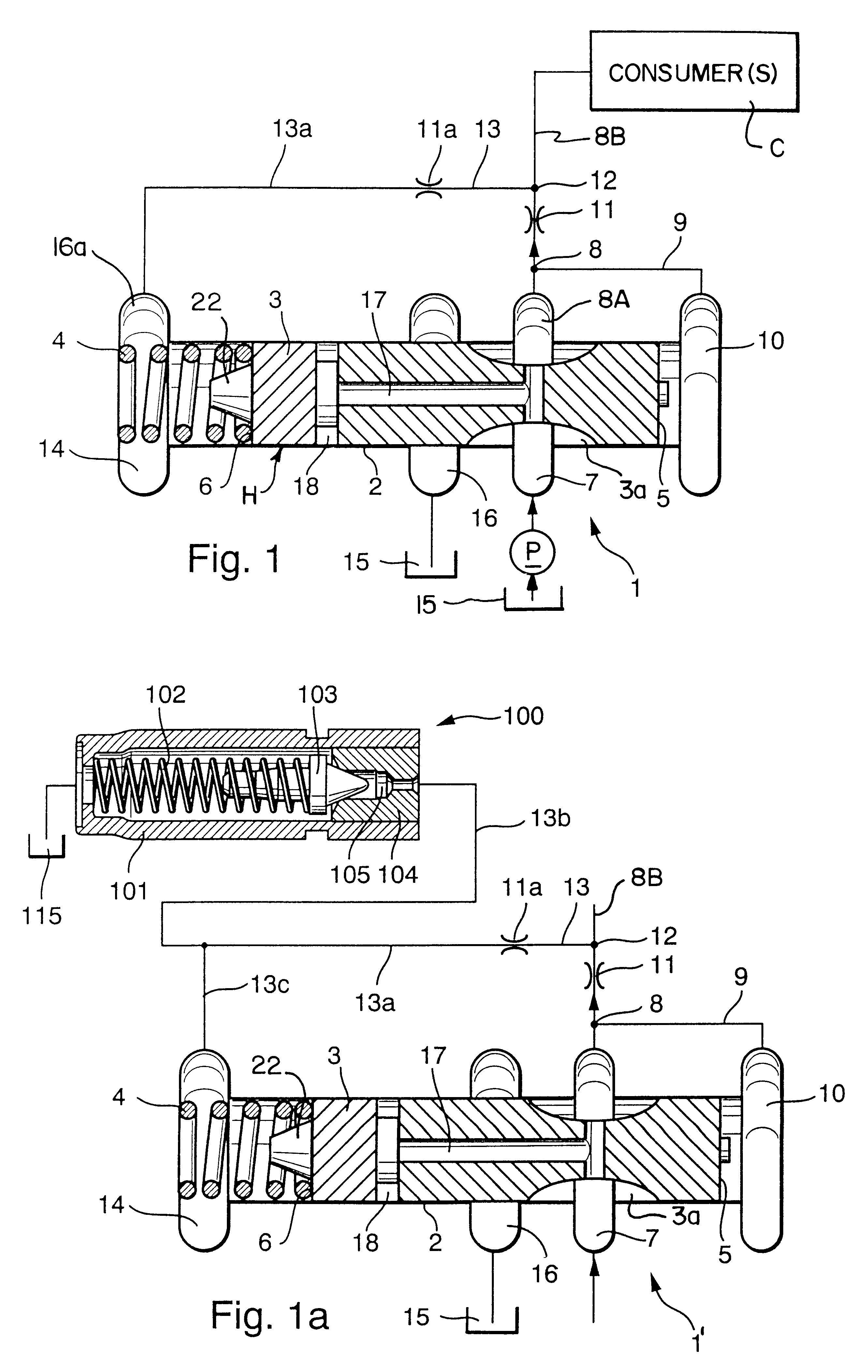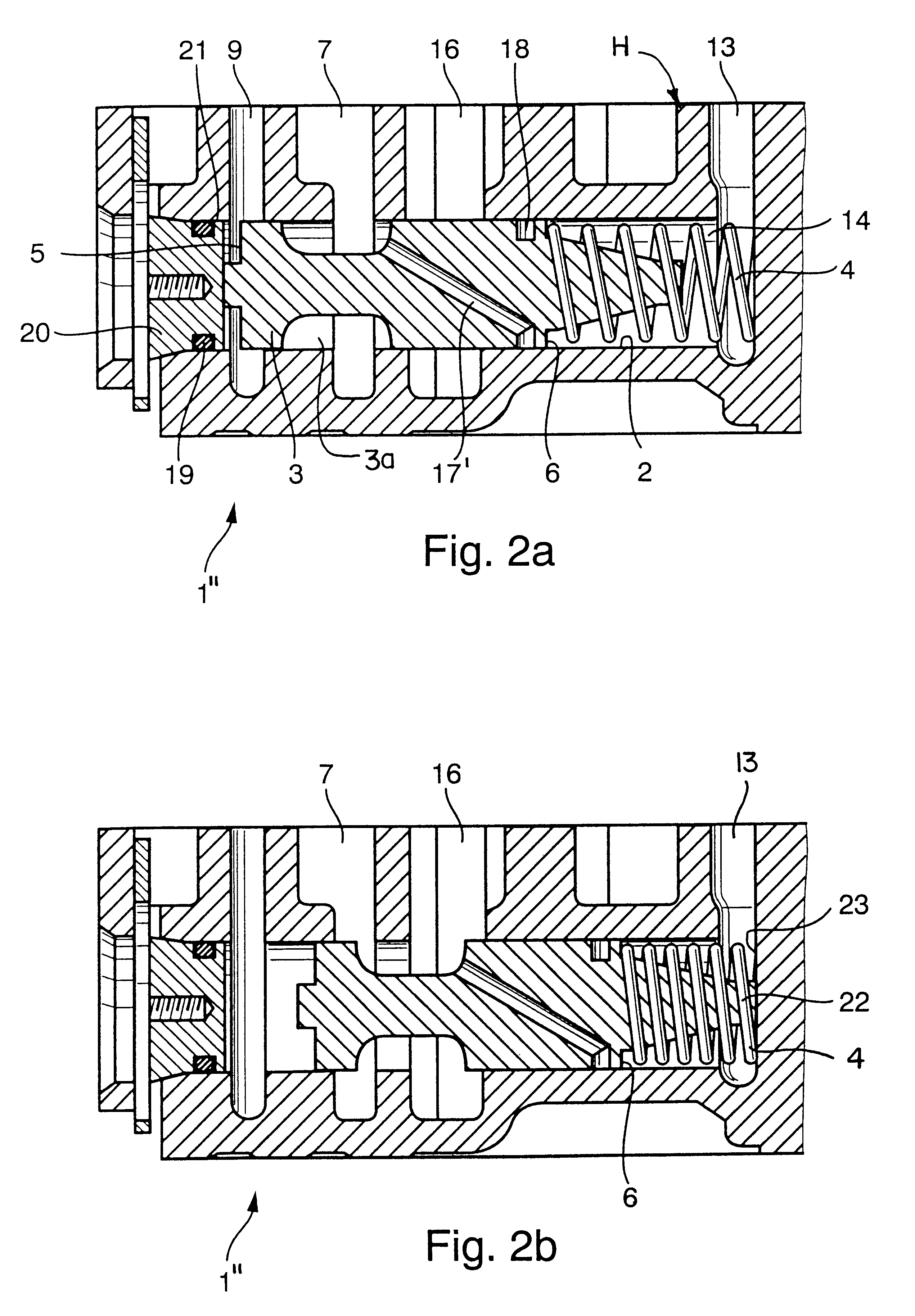Fluid flow regulating valve and method
- Summary
- Abstract
- Description
- Claims
- Application Information
AI Technical Summary
Benefits of technology
Problems solved by technology
Method used
Image
Examples
Embodiment Construction
FIG. 1 shows certain relevant details of a regulating valve 1 which embodies one form of the present invention. The valve has a housing or body H which defines an elongated passage 2 (such as a cylindrical bore or hole) for a reciprocable valving element 3, such as a piston and hereinafter called piston. The left-hand end portion of the piston 3 has an end face 6 and defines with the housing H a first chamber 14 forming part of the passage 2 and containing a supply of hydraulic fluid (such as oil) at a first pressure (pilot pressure).
The chamber 14 contains energy storing means 4 serving to bias the piston 3 axially in a direction to the right, as viewed in FIG. 1, namely in a direction to reduce the volume of a second chamber 10 defined by the housing H and the end face 5 of the piston. The illustrated energy storing means 4 is a single cylindrical coil spring reacting against the housing H and bearing upon the end face 6 of the piston 3; the bias of this spring is assisted by pilo...
PUM
 Login to View More
Login to View More Abstract
Description
Claims
Application Information
 Login to View More
Login to View More - R&D
- Intellectual Property
- Life Sciences
- Materials
- Tech Scout
- Unparalleled Data Quality
- Higher Quality Content
- 60% Fewer Hallucinations
Browse by: Latest US Patents, China's latest patents, Technical Efficacy Thesaurus, Application Domain, Technology Topic, Popular Technical Reports.
© 2025 PatSnap. All rights reserved.Legal|Privacy policy|Modern Slavery Act Transparency Statement|Sitemap|About US| Contact US: help@patsnap.com



